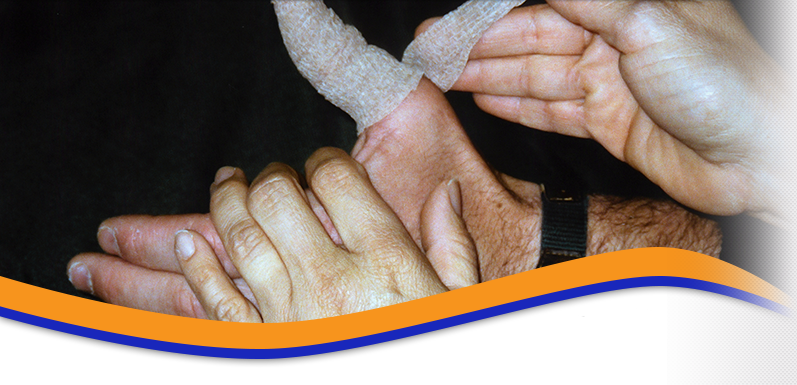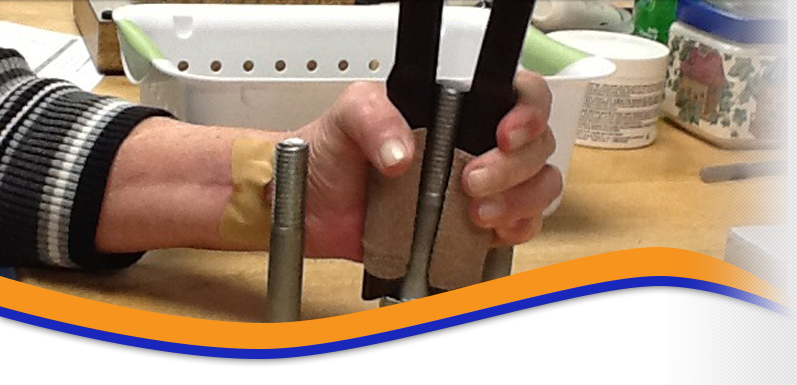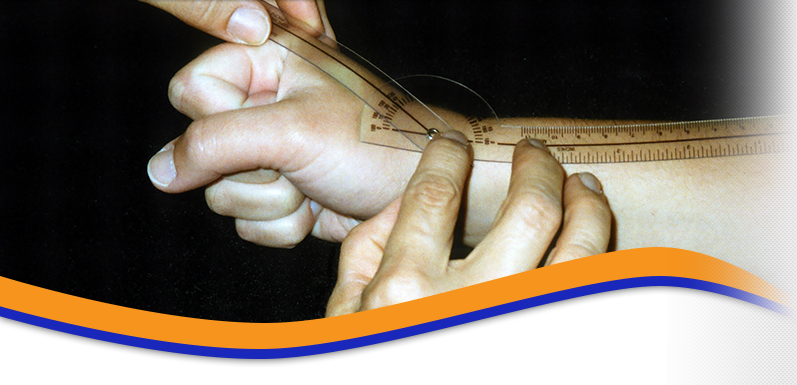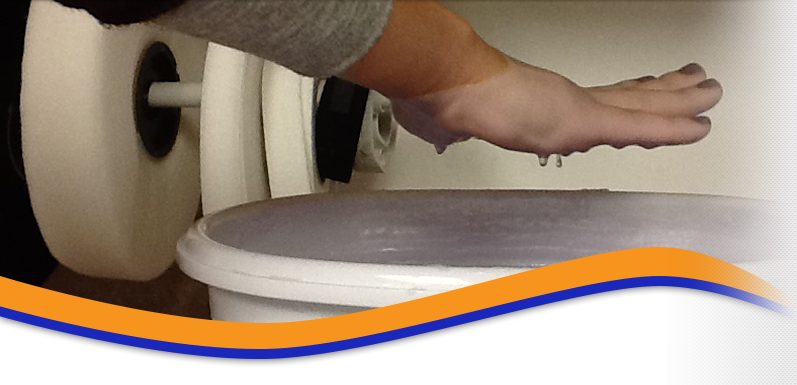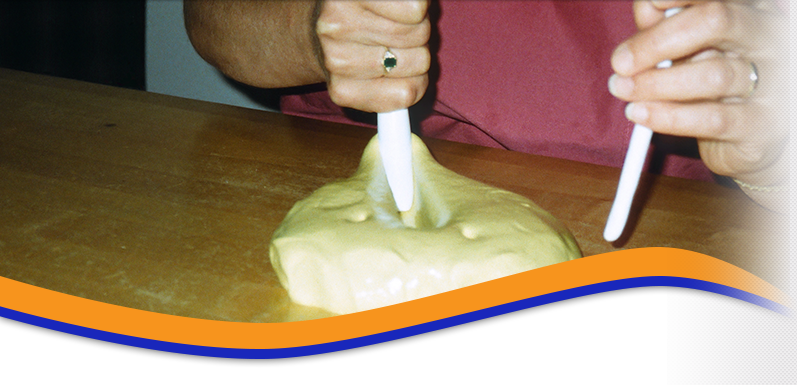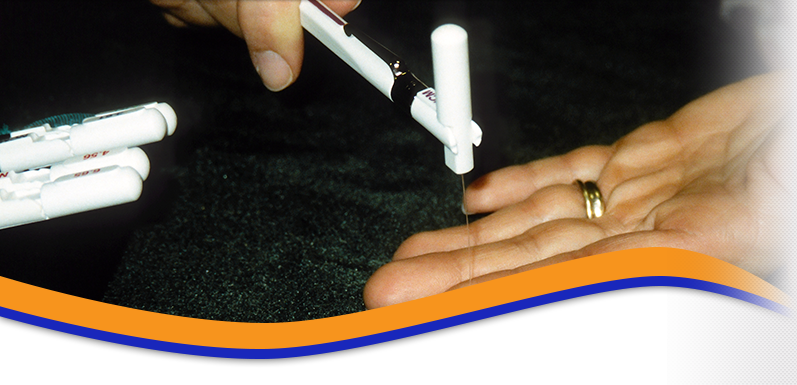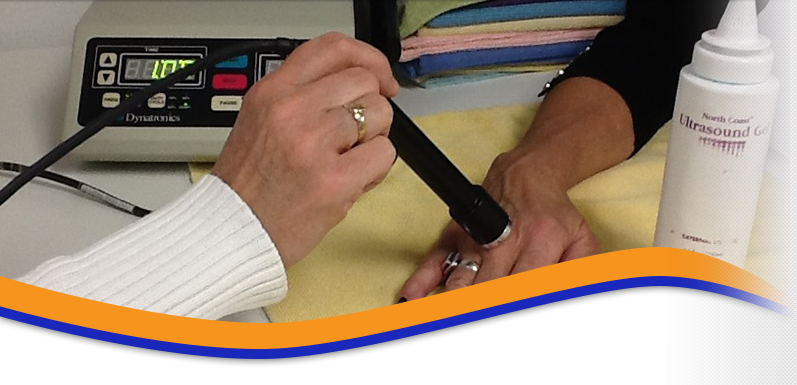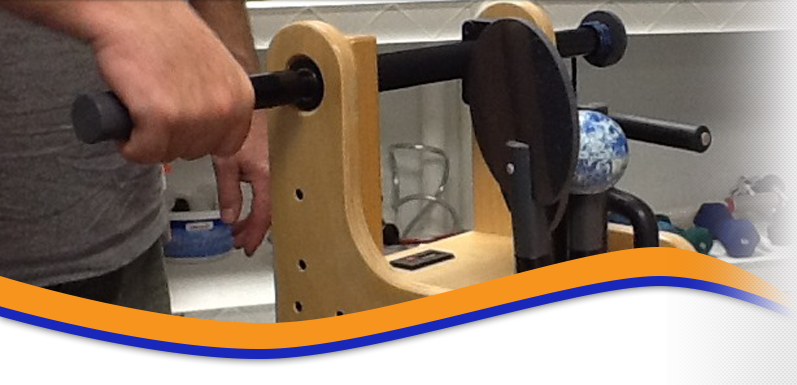Wrist Dorsal Capsulodesis:
6-8 weeks post-op: Therapy is initiated for swelling control measures, scar maturation techniques and AROM and AAROM (wrist extension only). Patient is instructed in a home program to be completed 4 times daily.
8-10 weeks post-op: Dynamic wrist extension splinting may be added. Progressive strengthening is initiated.
Thumb Ulnar Collateral Ligament Injury:
Conservative Management in Therapy:
0-4 weeks s/p: Patient is fitted with a short opponens splint with thumb in palmar abduction. Splint will restrict movement of the MP. Patient is instructed to wear splint continually. Splint may need to be adjusted as swelling decreases.
4-6 weeks s/p: Heat modalities are initiated. AROM is initiated to thumb. Splint is worn between exercise sessions.
8 weeks s/p: Splint is discontinued, but patient is cautioned to use splint PRN if hand is used for lifting or any heavy use up until 12 weeks s/p. Light gripping and pinching exercises are initiated.
Thumb Ulnar Collateral Ligament Repair:
6 weeks post-op: Swelling control, scar maturation techniques and A/AAROM exercises are initiated. (Patient may require a short opponens splint to be worn for protection between exercises depending on the nature of their work and activity level)
8 weeks post-op: PROM and progressive strengthening may be initiated
10-12 weeks post-op: Patient may return to unrestricted use of hand in almost all activities except for using a sustained power pinch. This should be avoided until 14-16 weeks post-op.
TFCC Debridement:
10-14 days post-op: Swelling control measures are taken, AROM is initiated, patient is instructed to use wrist splint between exercise sessions and during light ADL.
Heat modalities are used to help pain and tissue extensibility.
2-3 weeks post-op: As swelling decreases isometric exercises are initiated to forearm and hand and very light putty exercises may be introduced.
3-5 weeks post-op: Wrist splint is weaned gradually. Isotonic strengthening exercises are initiated and progressed as swelling and pain allows.
5 weeks to d/c: Therapy focuses on AROM and strengthening to maximum levels to resume work and home ADLs
PIP joint sprain:
Conservative therapy:
0-3 weeks s/p: Injured finger is buddy taped to the adjacent finger during the day and splinted in an extension gutter at night. If the injury involves the index radial collateral ligament or the small ulnar collateral ligament an extension gutter may be needed continuously. Another option is a hinged PIP splint which allows some flexion and full extension but no lateral motion. Swelling control measures are taken. Gentle AROM exercises are initiated within buddy tapes or ligament splint.
3-6 weeks s/p: AROM exercises are initiated outside of protected taping or splinting. Heat modalities and/or electrical modalities may be used for pain and joint stiffness. As pain level decreases splinting may be weaned however, patient may need to continue buddy taping with some activities.
8 weeks s/p: Progressive strengthening is added to program if pain level allows and joint is stable.
PIP RCL/UCL repair:
3 weeks post-op: Gentle AROM is initiated with patient wearing a buddy strap. Patient may need an extension gutter splint to wear between exercise sessions and at night. Swelling control measures are taken. Scar maturation techniques are taken.
6 weeks post-op: Gutter splint is discontinued and patient now buddy tapes during the day. Patient continues to buddy tape during exercise. AAROM may be initiated if needed.
7 weeks post-op: PROM may be initiated and progressive strengthening is added to therapy program. Buddy taping may be continued as needed for pain management.

